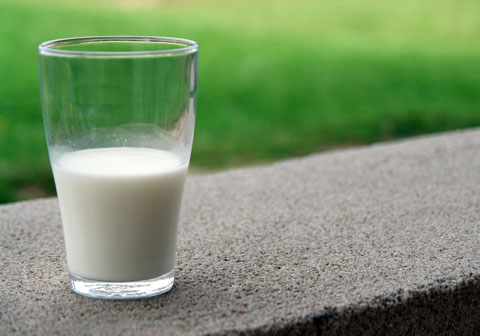The UPV/EHU's Nuclear and Radiological Safety research group is participating in validations of methods proposed by the International Atomic Energy Agency. In a recently-published study, this group has tested the viability of a method proposed by the international agency to measure radioactive strontium in milk, developed for cases of nuclear emergency, so that it can be incorporated into routine radiological monitoring measurements.
Adapted an emergency method for measuring strontium levels in milk so that it can be used in routine studies
The UPV/EHU-University of the Basque Country has adapted a fast radiological method for measuring strontium levels in milk so that it can be incorporated into routine environmental studies
- Research
First publication date: 08/09/2017

Strontium (Sr) is an element which in the event of a nuclear accident is the one that is most released into the atmosphere. The chemical behaviour of strontium is similar to that of calcium and can accumulate in the soil, in plants and in animals (in bones, especially). It is an element with two main radioisotopes (90Sr and 89Sr) which have an effective biological life that is relatively high for human beings, and due to its fixation in the bones, ends up giving a dose of radiation over many years.
The International Atomic Energy Agency (IAEA) has proposed, among many other things, a method to rapidly detect radioactive Sr in milk in the event of a nuclear emergency or accident. However, applying methods of this type is not valid in routine environmental measurements, in which the detection limits are much lower than in a nuclear emergency. That is why in a study conducted by the Nuclear and Radiological Safety research group of the UPV/EHU's Department of Nuclear Engineering and Fluid Mechanics has obtained the conditions and parameters with which to turn the rapid method proposed by the IAEA into a method that can be used in the radiological monitoring plans incorporated into routine environmental studies.
A single method that can be used for emergencies as well as routine analyses
The lab of the Nuclear and Radiological Safety research group is a lab for low activity measurements which besides being devoted to research also carries out radiological monitoring measurements for various bodies such as the Spanish Nuclear Safety Council. According to Raquel Idoeta, PhD, a researcher in this group, "it is a rapid method that performs well and is fairly straightforward and low-cost to adapt". In the study they carried out experimental measurements as well as numerical simulations to determine the parameters and conditions of adaptation; they also, as Idoeta explained, made an economic assessment "to see how easy it would be for other labs to adapt it". She went on to say that "any environmental lab that has equipment for detecting beta particles or which carries out strontium assessments hardly needs anything else to incorporate this method. A lab that routinely applies this method would not experience major problems in applying it properly in the event of an emergency to provide a rapid response when establishing radioactive strontium in milk, even though in this case it would be adapting the measuring volumes and times in line with what has been assessed in our study to meet the demands in environmental matters".
Additional information
The UPV/EHU's Nuclear and Radiological Safety research group is a consolidated research group of the Government of the Basque Autonomous Community. The Low Activity Measurement Lab (LMBA) is part of the UPV/EHU's Department of Nuclear Engineering and Fluid Mechanics. It is located at the Faculty of Engineering in Bilbao.
Bibliographic reference
- Analysis of the use of the IAEA rapid method of 89Sr and 90Sr in milk for environmental monitoring
- Journal of Environmental Radioactivity (October 2017)
- DOI: 10.1016/j.jenvrad.2017.06.003






